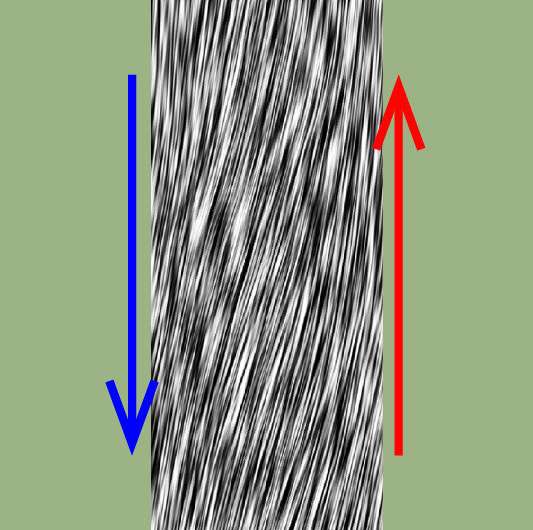Two-way traffic for cell migration

Cells often move in groups. They sometimes adopt a strategy that leads them to move in antiparallel directions, as explained by the work of the Biology-inspired Â鶹ÒùÔºics at MesoScales team led by Pascal Silberzan at Institut Curie, Paris.
Just as there are many ways to walk, cells can move in many ways. Often in groups, cells migrate during embryonic development or tumor progression. These migrations are impaired by numerous obstacles (vessels, muscle or nerve fibers or extra-cellular matrix fibers), which often force them to move in confined spaces. The physicists of Pascal Silberzan's team (Institut Curie/CNRS/UPMC) reproduce in a very controlled way such an environment, to better understand these collective cellular behaviors, with sometimes surprising results....
Antiparallel displacements
"In many biological tissues, cells are at high density in a limited physical space. We reproduced this confinement using microfabrication techniques," explains Pascal Silberzan. These in vitro models allow to confine a set of elongated cells in tracks whose width varies from a cellular size to more than one millimeter. In collaboration with a team from the Francis Crick Institute in Great Britain, Pascal Silberzan's team has evidenced various behaviors, depending on the width of the track:
- On tracks wider than about 50 µm, the cells align with each other and spontaneously make an angle with the direction of the track. At the same time, the cells near the edges move collectively in opposite directions, in an antiparallel manner.
- On tracks narrower than this 50µm threshold (but always much wider than a cell size), the cells align perfectly with the direction of the band and the antiparallel displacements disappear.
"Antiparallel cellular displacements had been observed during embryonic development or tumor evolution, but neither the mechanism nor the function were understood," adds Guillaume Duclos, a Ph.D. student at the time of the study. In other words, if the overall movement of the cells is directed from the tumor to the external environment, some of the cells also migrate in the opposite direction, i.e. toward the tumor.
The hydrodynamics of active fluids provides a framework to explain this phenomenon. This physical theory makes it possible to understand how cellular activity induces antiparallel movements on wide tracks. It also explains the transition between the phase where the cells make an angle with the track and develop antiparallel flows, and the phase without these characteristics: It is a mechanical transition controlled by cell activity. "This physical theory is very general, it is based on the active nature of cells, on symmetries and on the laws of conservation of the system", explains theoretician Carles Blanch-Mercader, then Ph.D. student in the team Â鶹ÒùÔºical Approaches of Biological Problems. It therefore provides a very generic mechanism for the interpretation of the corresponding observations in vivo.
The interface between physics and biology once again sheds light on a cellular mechanism that has been poorly understood so far, in this case unexpected cellular displacements running against the collective migration.
More information: G. Duclos et al. Spontaneous shear flow in confined cellular nematics, Nature Â鶹ÒùÔºics (2018).
Journal information: Nature Â鶹ÒùÔºics
Provided by Institut Curie
















